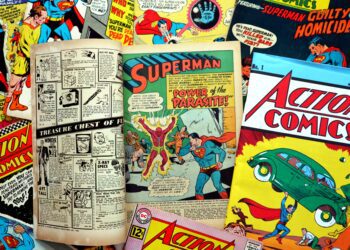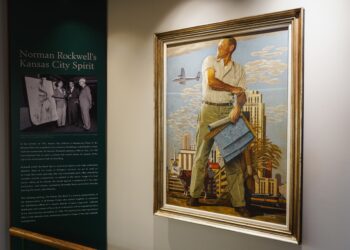As a critic myself, I get it. Most art exhibitions aren’t amazing. I personally think about gallery-going the way I do thrifting, even though I don’t buy art because it’s much more expensive than used clothing. At both galleries and thrift stores, I like to poke around in hopes of being pleasantly surprised. Most of what’s on display is, by definition, average: a pair of innocuous chinos; an abstract painting that would look nice above your couch. Some of it’s a bit cringe, the art equivalent of a tuxedo T-shirt. And some is interesting but just not your size or style. Only at rare moments, often when the search feels futile, do you stumble upon something incredible: a jacket or a sculpture that feels as though it exists just for you, whose improbability makes the discovery that much more meaningful.
Art isn’t what it used to be, in good and bad ways, but every generation experiences a version of this phenomenon as it ages. What stands out about these critical complaints is their frustration toward how the world itself has changed, often in ways hostile to artists. Today’s technological and economic conditions exert novel demands on US arts professionals, creating an industry where overwork and precarity are the norm. It’s no surprise that artists have adapted to these conditions and it’s no surprise, if a bit cliché, that some critics wonder if that means art’s best days are behind it.
FARAGO’S “WHY CULTURE HAS COME TO A STANDSTILL” argues that Western culture’s best days have passed but that, once you accept the fact, you can have a more fulfilling relationship to what remains. The article asks “why cultural production no longer progresses in time as it once did,” and answers that phones and other digital tools create so much “chronological confusion” that the concept of aesthetic progress no longer makes sense. Instead, we have “a culture of an eternal present,” exemplified by Amy Winehouse’s hit 2006 album Back to Black, which sounds “neither new nor retro,” “as if it came from no particular era.”
The argument’s premises aren’t particularly objectionable; however, the conclusion Farago draws from them is silly. He contends that “the lexical possibilities of many traditional media are exhausted,” and thus no major stylistic innovations are possible within them. As a result, he believes audiences ought to let go of the lingering high modernist belief that “good art is good because it is innovative.” But you get the feeling Farago is less at peace with his cultural disappointments than he pretends, given that his subsequent reviews continue to dredge up examples of aesthetic stagnation, always linking back to this article.
What’s actually happening is that culture as Farago knows and prefers it is changing as a result of techno-economic pressures. In recent decades, cultural platforms have undergone transformations even more dramatic than the content they showcase, with profound effects on how and why artists operate: from becoming content creators, to collaborating with AI. As a staff writer for the paper of record, at a time when such jobs are near-extinct and the term “paper of record” feels like an anachronism, Farago is aware of the changing status quo. He just chooses to cling to yesterday’s norms even as he pretends to let them go.
OVER THE PAST HALF-CENTURY, US neoliberal austerity has exacerbated pressure on artists, curators, and arts writers, making institutional success feel increasingly zero-sum. At the same time that middle class creative and intellectual career paths have grown more precarious, the costs of housing, health care, and college have risen faster than wage growth. The art market, where idealistic press release rhetoric often runs cover for the machinations of extreme wealth, renders these material disparities conspicuous. For artists and culture workers without a financial safety net, these conditions discourage taking aesthetic or personal risks and encourage play-it-safe professionalism.
I still long to be pleasantly surprised, but it gets harder as you get older. What would surprise me right now are critics who articulate positive visions of the art world they want to see, rather than grouse about what’s dull or different. But those kinds of articles are harder to write, and receive less attention, than sensationalized negativity. Farago and Kissick, in those aforementioned articles, actually do include lists of their contemporary aesthetic pleasures; Tatol, too, consistently reviews exhibitions he loves (though there are fewer of them than ones he hates). The bright spots in these critics’ fields of vision contravene their gloomy theses about art’s exhaustion. Incredible work still happens, about as often as it always has; our jobs and our phones are creating new obstacles, as well as new opportunities, to make and find it.
Read the full article by Louis Bury / Art in America












